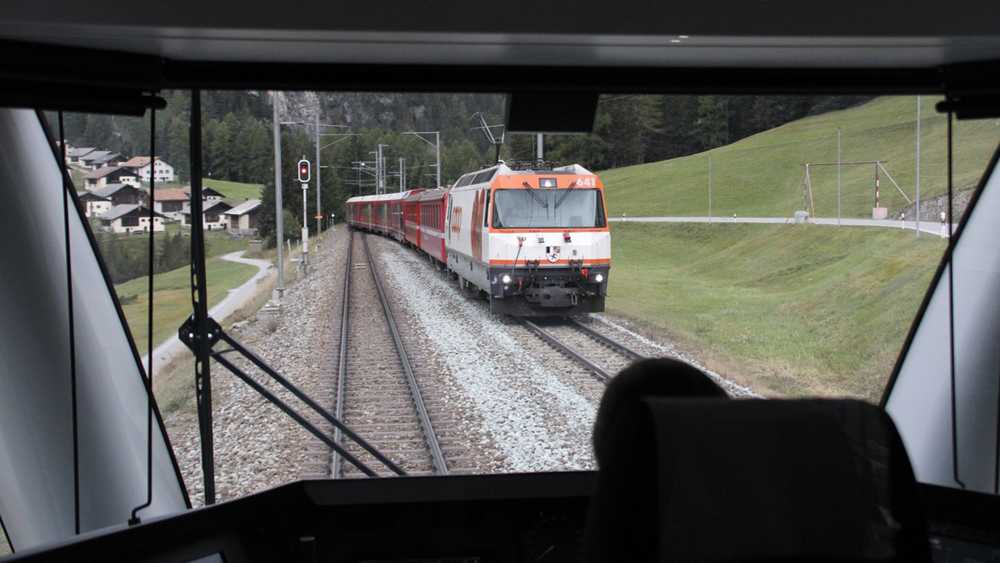
ABOARD SWISS FLIGHT 8 — I left my heart in Graubünden.
It’s unlikely anyone will ever pen an entry in the Great American Songbook with that title — probably not even in the Great Swiss Songbook, if such a thing exists — but it’s true. While my 16-day trip to Switzerland will eventually yield three articles set in three cantons (the Swiss equivalent of states or provinces), and I enjoyed everyplace I visited, the bulk of the time was spent in rugged Graubünden in the federation’s southeast, on the remarkable meter-gauge Rhätische Bahn.
Best known as the home of the Bernina Express from Tirano, Italy, to St. Moritz, as well as part of the Glacier Express — the heralded “World’s Slowest Express Train” between St. Moritz and Zermatt — the RhB is much more than those two passenger trains, although passenger service is central to its existence: the railroad carried almost 16 million riders in 2023. It did this on a 385-kilometer (239-mile) network — only slightly more railroad than the New York-Washington segment of the Northeast Corridor (about 225 miles) — Except, of course, that about a third of that network is above 1,500 meters (more than 4,900 feet) and a fifth is either in a tunnel or on a bridge of some kind. This is infrastructure-intensive railroading.
When I contacted the RhB about writing an article, I said I wanted to write about anything and everything BUT those two trains. The response, basically, was: Great. Specifically, what would you like to do?
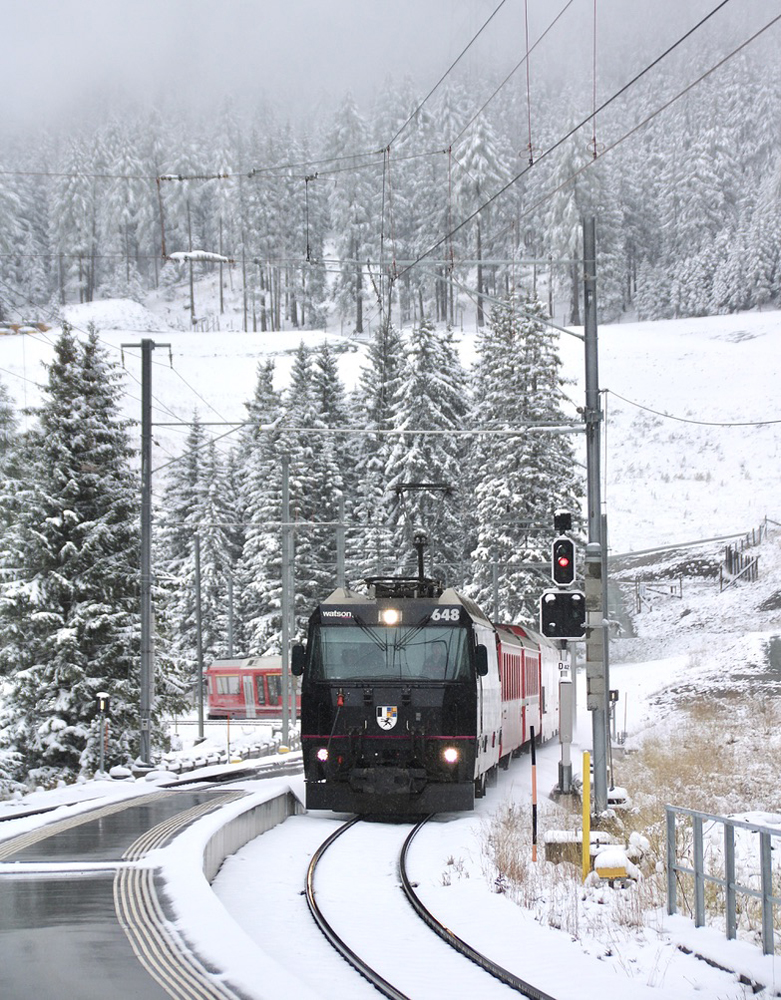
And so, for four days, they pretty much opened the doors to whatever I wanted to see. With the project’s chief engineer, I visited the 6-kilometer Albula Tunnel that opened last summer, replacing a deteriorating structure dating to 1903. We walked through a portion of the old tunnel — now being turned into an emergency escape route — and saw the crumbling walls that made a new tunnel the only real option. The company’s head of rolling stock gave me a tour of the main shops at Landquart — perhaps the most spotless facility of its kind I have ever seen — and showed me the project to rebuild an electric locomotive purchased from another railroad, a job so extensive it essentially qualifies as building a new locomotive from scratch, wholly by the company’s own workers. One of their media relations staff members accompanied me to ride their heritage train between Davos and Filisur, and talk about some of the other operations that cater to rail enthusiasts.
The assistant to the head of the freight department showed me the RhB’s main intermodal facility, and explained the barriers that the railroad faces in growing the freight business that remains only a fraction of its overall operations. The head of the company’s car transport trains gave me a look at that operation, used to ferry cars and trucks through the 19-kilometer (11.8-mile) Vereina Tunnel — a faster alternative to driving over a mountain pass much of the year, and the only option in the winter, when the pass is snowed in. And their chief of infrastructure took me to two bridge projects that show the kind of never-ending battles against nature that the railroad faces because of its rugged environment. On one of these, they stopped a passenger train to drop us off, and stopped another to pick us up. I would say they rolled out the red carpet, but that understates the degree of welcome.
It was remarkable — and so were the people. The RhB employs about 1,800 people (as opposed to something like 30,000 for SBB, the Swiss Federal Railways), and while I only met a fraction of them, I can tell you I never met one having a bad day. Their pride in their company is clear, and my sense from the way they greet each other is that there is real since of coworkers as family. I know that’s a cliché, but when I walked around with Markus Zaugg, the head of rolling stock, you could understand the positivity in the greetings even without knowing the language.
Universally, the people of the RhB were patient with my questions and never complained about my interruptions. At one of the bridge sites, the workers were knocking off for the week as we arrived — it was Friday afternoon — so anyone who remained did so only because of me. If they were anxious for me to leave so they could start their weekend — and who could blame them? — no one displayed a hint of impatience.
Many of them apologized that their English wasn’t better, but it usually was quite good. And, as I always told them, it was way better than my German, which begins and ends with “Guten morgen,” “danke” and “bitte.” (And half the time, I found myself inadvertently defaulting to the Italian “grazie” and “prego” for the latter two.). Considering that for many, English was at least their second language, often their third, and sometimes their fourth in a country that also speaks French, Italian, and Romansh, I was truly impressed with their communication skills.
After those four days of scheduled activities, I spent a weekend roaming the line for photos — unexpectedly getting some truly wintry scenes as some of the higher altitudes were hit with significant earlier-than-usual snowfall — and moved on to my other features at the Lötschberg Tunnel and the Centrovalli Railway.
But with a final weekend that I had kept open for vacation activity/sightseeing/whatever, I ultimately returned to the RhB to explore its southernmost portion, the Bernina Line. Since riding the Bernina Express last year, I have really wanted to photograph a train on the spiral viaduct at Brusio, just north of the Italian border; you can’t really get a decent shot from the train. I fulfilled that goal and did much more.
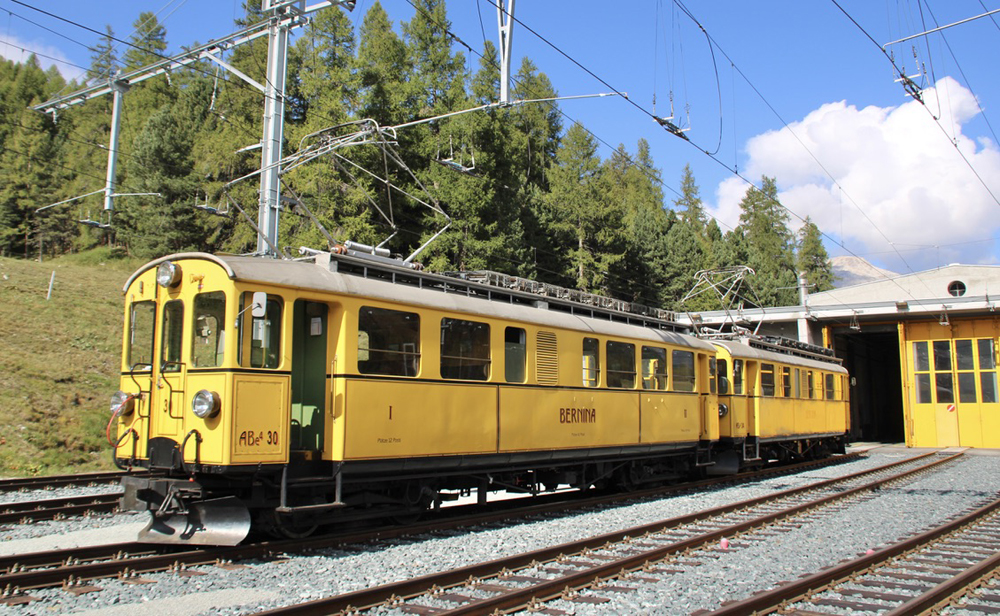
On Saturday, Zaugg was good enough to make the trip from his home near Landquart to show me the historic equipment stored in the Pontresina engine house, even going so far as to pull out two century-old electrics for the photo you see here. (I was disappointed that no one on the Bernina Express that passed seem to appreciate how lucky they were to have these sitting outside as they rolled by.)
The absolute gem is the one-of-a-kind, self-propelled steam rotary snowplow — described by its builder as “a locomotive that can plow snow,” Markus told me. I’m by no means a steam expert, but I can certainly appreciate that an 0-6-6-0 that also powers a third set of cylinders to turn the rotary is an amazing machine — all the more so because, freshly back from a three-year restoration, much of it looks brand new. I would love to see it run; not sure I can swing a trip for one of its two annual excursions per year, though. Maybe I can convince Trains to run its first international photo charter.
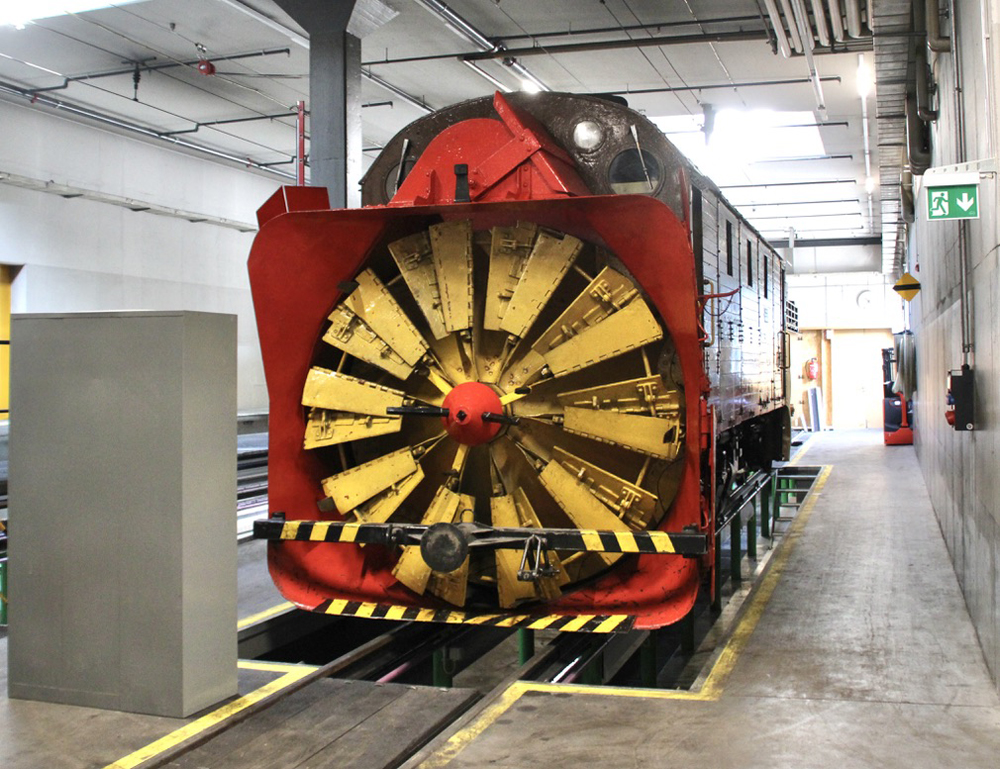
The rest of Saturday, and all of Sunday, was spent doing lots of hiking to remote photo locations along the Bernina Line. You’ll eventually see some of the results in the magazine — but since I already mentioned it, here’s one of those shots from the spiral viaduct at Brusio.
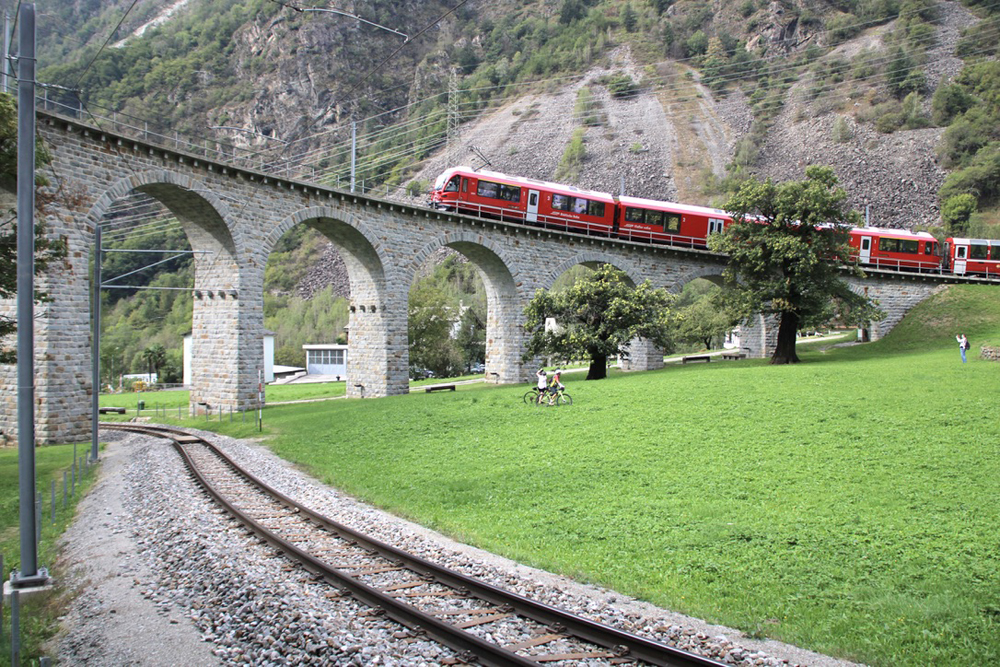
So, I’m home, now having ridden every one of the RhB’s 385 kilometers as part of a broader range of experiences that included the world’s most expensive visit to a laundromat, falling down an Alp (my knees are starting to forgive me), and pushing myself a bit physically. (The one-day high, according to the Fitness app on my watch: 12.83 miles. And because, as you may have heard, Switzerland is not flat, I also had a day where I climbed the equivalent of 46 flights of stairs. It was not the same day.)
I’ll be digging out of a backlog of work for a while, while wondering how I’m going to fit in the time needed to write those features. And if I don’t get sick in the next few days, it will be a miracle, having crossed the Atlantic sitting opposite a couple that spent 10 hours coughing their heads off and apparently in more than seven decades never became acquainted with the concept of covering your mouth. But at least I’ll be enjoying Swiss chocolate for a while. And whenever things get difficult, I’ll think of myself at that viaduct in Brusio, or the magnificent view at Alp Grüm, or standing in the snow to shoot a meet at Davos Larat, or any of a dozen other magical moments. And I’ll smile.
And as it happens, next week, I’ve been invited to dinner in Chicago with one of my contacts with Travel Switzerland, along with representatives of the GoldenPass Express and the Swiss Federal Railways.
Maybe we can work on making that next trip happen sooner rather than later.






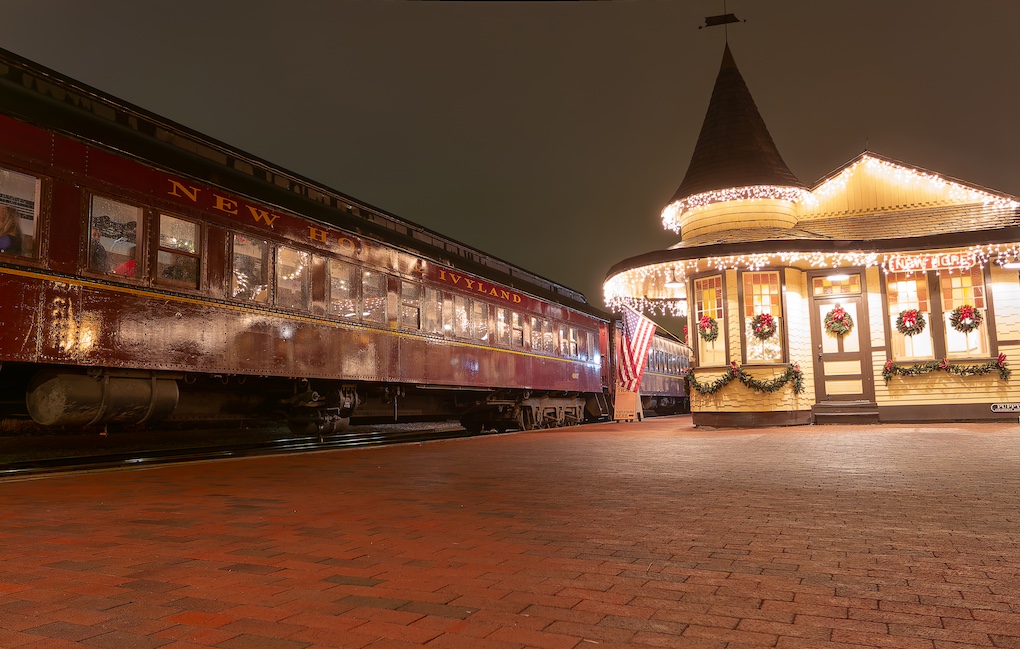
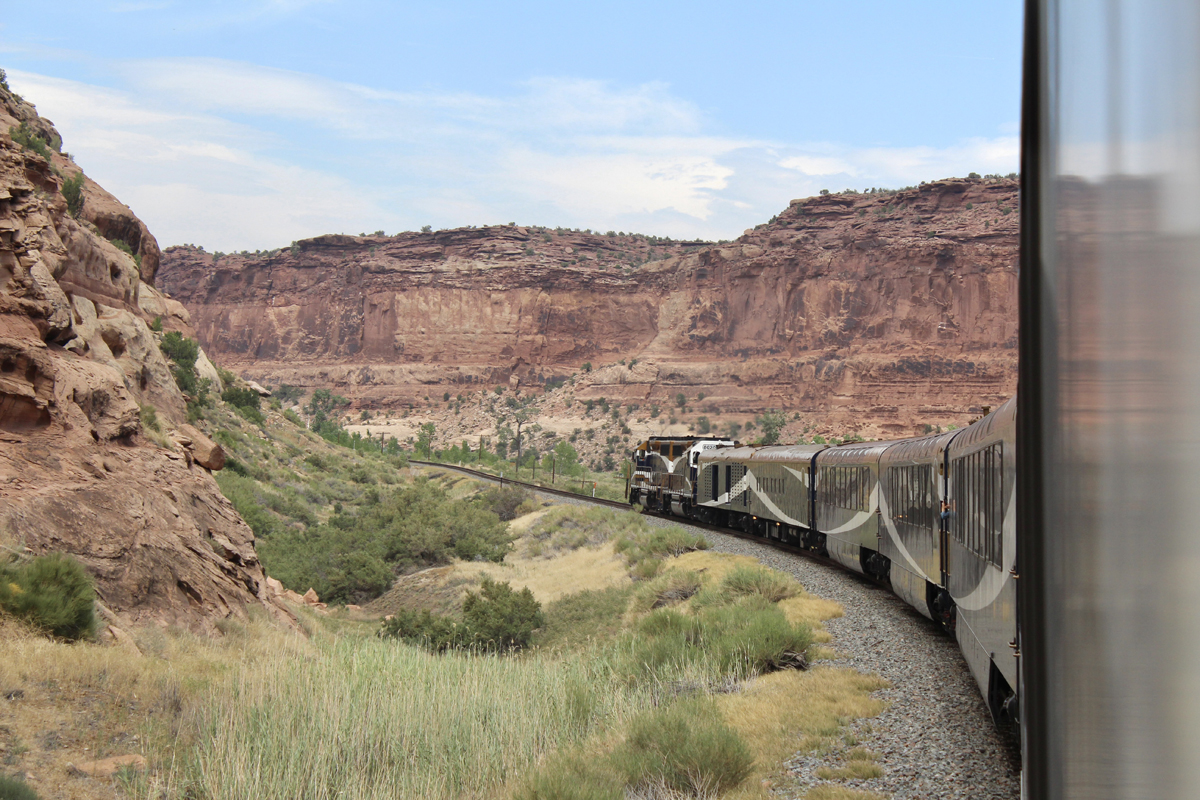
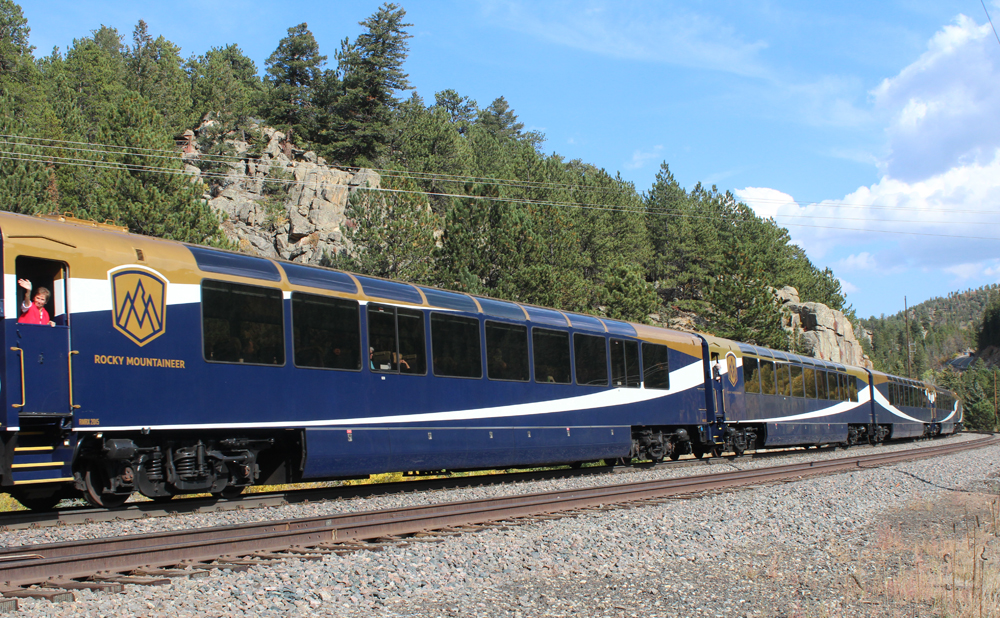
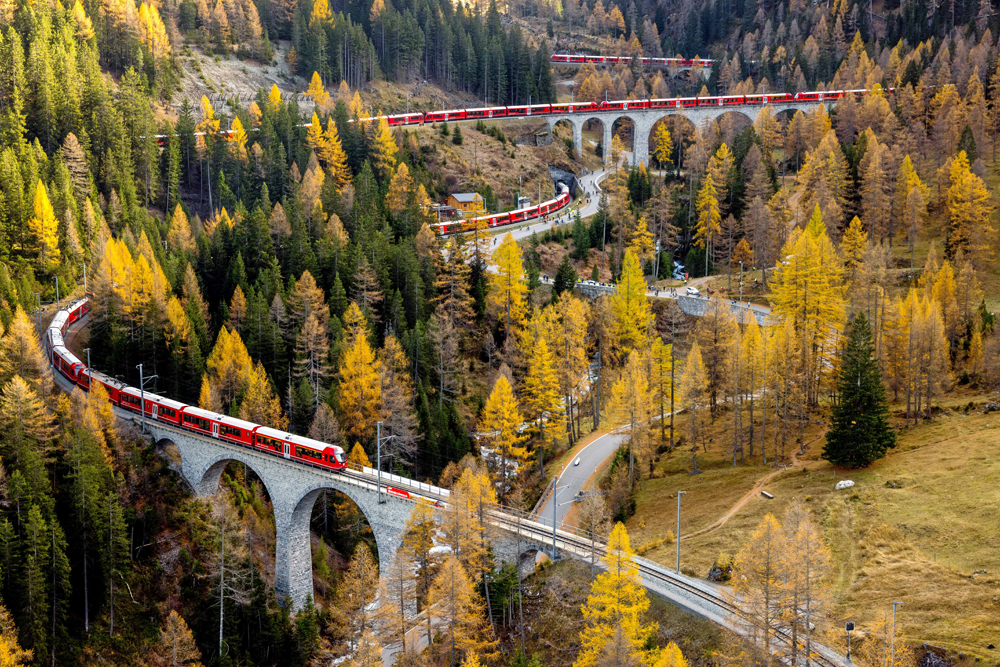




Can’t wait for the full articles – looks like you had a blast.